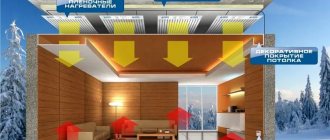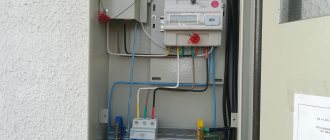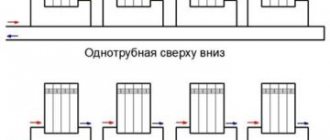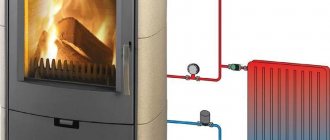In recent years, more and more people are deciding to switch from central apartment heating to individual heating. This is due to many reasons: interruptions in heat transfer, lack of insurance against emergency situations, high cost of utilities, inability to regulate the temperature independently. So, if you have a desire to install an autonomous heating system in your apartment, how realistic is this? What options are there and which one is right for you?
Individual heating in an apartment: is it possible?
Of course it is possible. However, it should be noted that installing an individual heating system has its advantages and disadvantages.
Among the obvious advantages are:
- The possibility of individual heating of the apartment in the off-season, when central heating has not yet been started, and the ambient temperature has large daily fluctuations.
- The ability to maintain the required heating level in all rooms, including depending on the time of day.
- Reducing the cost of heating a home by an average of 2-3 times, subject to certain conditions.
- Since there is no risk of water hammer in an autonomous system and there is no “contaminated” coolant, you are free to choose radiators.
- Long service life of the equipment.
- Safety, ease of operation of the equipment.
Disadvantages of installing an autonomous apartment heating system:
- It is necessary to allocate a separate equipped room for a mini-boiler room.
- High installation and installation costs.
- Difficulty of registration: you will have to go through a lot of authorities and collect a decent stack of documents to turn off the central heating system and allow you to connect an individual
- Responsibility for the installation, operation and safe operation of the unit falls on the owner of the apartment.
Paperwork and its difficulties
If usually the catalyst for all problems is the amount of money for the service, then in the case of autonomous heating it is the collection of all necessary confirmations and permits for installation.
In addition, permission may not be obtained at all, since officials are very reluctant to cooperate and may simply stall the issue, especially if the apartment in the building is the only one that claims heating independence. If a refusal occurs, then it is imperative to convene a commission, which, with the support of independent experts, will have to justify the decision of the utilities and make a final verdict.
On the other hand, if the house is not an apartment building, but your own, then the problems become much less. This is due to the fact that you can simply contact an installation company that will solve all problems: from obtaining the necessary documents to installing the boiler.
Permission for individual heating. Step-by-step instruction
In addition to the allocation of equipped premises, which was already mentioned above, it will also be necessary to carry out some redevelopment of the apartment premises to organize individual heating, which cannot be done without an appropriate plan and supporting documents, the list of which is approved in Art. 26 of the Housing Code of the Russian Federation “Grounds for the reconstruction and (or) redevelopment of residential premises.”
You will need the following documents:
- Application-petition for the desired reconstruction of residential premises, established by the Government of the Russian Federation.
- Document on ownership of the apartment.
- Written consent of all residents registered in the apartment for the reconstruction of the heating system.
- Technical passport of the apartment.
- Reconstruction project in accordance with the established form.
- Conclusion from the department for the protection of architectural monuments on the admissibility of work on the reconstruction of the apartment.
The first step is to send to the local gas distribution company permission to disconnect the apartment from central heating, obtained on the basis of the above documents. If the answer is positive, a certified heating boiler is purchased. Then you should contact the design office to prepare a plan for installing the necessary equipment.
After receiving permission to switch to an individual heating system from the HOA and a certificate from the fire service, which confirms the safety of the developed project. All documents are sent to the administration, where within 45 years the possibility of switching the apartment from a central heating system to an autonomous one is considered.
Installation
To create a heating system on the roof, you need to build a separate room. The roof boiler room is autonomous: once it is started, it is enough to carry out rare scheduled checks.
The process depends on the device variant. There are 2 types - built-in and block-modular.
Built-in
Boiler rooms built into the roof are used in new buildings. Such a device is installed only in a building under construction or in a building that has space to accommodate a thermal station. For built-in boiler rooms, the additional load on the walls of a multi-story building must be calculated and a fire extinguishing module must be created.
The main advantage of the device is the ease of creating and implementing a project. Along with the installation, work is carried out to install sound-absorbing coatings and vibration protection. Conducted at the finishing stage, they are more efficient during operation.
Block-modular
To place a roof boiler room in a constructed building, a block-modular type is used. The most common installation option is during a major overhaul. A roof boiler room is installed in case of restoration of the heating system. The project is created based on the characteristics of the building. The device is then created and delivered to the required building.
Before installation, the roof is inspected:
- Check the condition of the load-bearing supports.
- Apply a protective coating to the installation point. It is a concrete pad.
- Sound-absorbing material is installed.
Having completed the preparation, the boiler room is connected to the heating network. It is set up and the coolant is distributed. Having connected to the heating, they begin operation.
What to pay attention to
Before installing the device, it is necessary to take into account that it creates a load on the structure. Because of this, the following rules must be observed:
- It is prohibited to place the boiler room on the ceiling above residential premises.
- It is prohibited to place equipment in premises adjacent to residential premises.
- When designing, the size of the house in which it is planned to be located is observed.
- When designing, an emergency shutdown system is created.
Gas heating of the apartment
This system operates thanks to a boiler that runs on gas. For apartments, a wall-mounted option with a closed burner is selected; it will not consume air from the room and will not require a chimney system. This is a fairly compact but powerful device. Its main advantage is that it can be used at any time of the year; it is always ready for use. In addition, the price of gas as fuel is quite low.
Gas boilers can be of two types: single-circuit and double-circuit. The latter, in addition to heating, provide heating of running water. This is a clear plus, since you no longer face the problem of turning off hot water. You must indicate the type of boiler you are installing when submitting an application to install an autonomous heating system in an apartment in order to obtain permission to disconnect your home from the hot water supply (hot water supply).
However, the room in which the boiler will be installed will not always coincide with the preferences of the residents. It must meet the established requirements:
- Area of at least 4 sq. meters
- Entrance door with a width of at least 800 mm.
- Presence of a window
- The boiler must be installed on a wall made of non-combustible material
- The boiler is mounted at a distance of at least 300 mm from other gas appliances
Selection of fuel and boiler
Gas is most often used for automatic heating systems, as it is one of the cheapest natural resources. In addition, many boilers are designed specifically for it and can be placed both on the floor and on the wall.
As for the boiler itself, the key choice here is between cast iron or steel equipment.
Steel boilers are susceptible to corrosion, and therefore are not as durable as cast iron models. On the other hand, installing a steel unit is much easier than a cast iron one due to the weight of the device. In addition, a steel boiler is much easier to hang on the wall, which is why most of these models are made from this material.
How to calculate the cost of autonomous heating, see the example in the video:
Electric heating of the apartment
Not all apartments have a gas connection. Therefore, we have to resort to individual electric heating of the apartment. We have highlighted the main options that are most often used when heating an apartment with electricity.
Cable electric floor
The underfloor heating system is a heating unit consisting of special heating electromats and cables laid in the floor. They convert electrical energy into heat, which is evenly distributed from the surface throughout the room. Special temperature sensors are also installed and as soon as it reaches the desired level, the heating turns off and starts after the temperature drops. An electric floor does not take up separate space, does not require complicated installation, does not dry out the air and has a long service life. This is a good option for main heating in a small and well-insulated apartment. Because it uses a lot of electricity to convert heat.
Infrared floor
This type of heating is not used as an independent system for autonomous heating of a room. An infrared floor is more suitable for additional insulation of some rooms, for example, a bedroom and a nursery. A special surface laid on the floor works in infrared radiation when an electric current passes through a special graphite paste. Infrared rays move until they meet a large-scale object on their way, accumulate on it, and the object, in turn, gives off the resulting heat. This way the temperature in the room is distributed very evenly.
Like cable flooring, infrared does not affect air humidity, has an automated temperature control system and does not take up extra space in the room. Among the main disadvantages is the high price of the equipment. If desired, infrared film can also be installed on the ceiling; regardless of the installation location, the temperature at the bottom of the room will always be warmer than at the ceiling. What is considered the most comfortable heat distribution in a living space.
An electric floor can be combined with central heating, using it in the off-season or when the apartment is very cool.
Selection of pipes, boiler and radiators
The operation of the entire system depends on the correct choice of boiler.
For example, if you need to install a boiler to heat water, then you can get by with a single-circuit gas boiler.
When choosing gas heating, it is better to purchase a boiler made of cast iron or special durable metal. Although they are heavy, they will last much longer.
But the pipes for such a heating system are polypropylene or metal-plastic. as a budget option, and copper, if your wallet allows it.
Radiators will also have to be decided in advance. Today, bimetallic heating radiators have become very popular among consumers.
Which ones are actually better for an apartment can be determined by the amount of heat transfer, for example:
Before purchasing radiators, you need to calculate in advance how many sections will be needed for each room. To do this, the heat transfer of the material must be divided by 100. For example, for a bimetallic radiator it is 199 W/100, which equals 1.99 W per 1 m2.
There are several nuances that should be taken into account when choosing radiators and calculating their quantity:
- If the installation of batteries is planned in a corner room, then 2-3 sections need to be added to the results obtained in the calculations.
- When decorative panels are installed that hide batteries behind them, heat transfer is reduced by 15%, which should be taken into account before making calculations.
- Insulated walls or metal-plastic windows can reduce heat loss.
- Installing a meter will allow you to independently regulate gas consumption.
Having made all the calculations and adding to them the cost of the most autonomous gas heating system, you can decide on its purchase, or you can compare these figures with electric types of heating.
Water heated floor in the apartment
This type of individual heating system is made of pipes under the floor covering, filled with cement mortar. This structure is connected to the heating system. Hot water flows into the pipes. As can be seen from the description, installation of such a system in the fall is labor-intensive and can only be carried out at the stage of building a building or major renovation. This system has a long service life (up to 50 years). When installing a water heated floor, it is important to provide for the inevitable rise in floor level (from 10.5 cm and above): a thermal insulation barrier, pipes, pouring a layer of concrete onto the screed, a finishing coating. Unlike an electric floor, a water floor is more economical and safe.
Be careful! It is not always possible to use water floors as individual heating in apartments, and even more so it is not possible to connect water floors directly to central heating. For this you need a special heat exchanger.
Video on installing heated floors in an apartment:
Advantages
In order for the roof boiler room of a residential building to operate stably, it is necessary to carry out careful calculations and not skimp on installation. Equipped on the roof of a house, it has advantages over other systems:
- Installed on the roof of the house, the boiler room reduces energy losses during the transfer of coolant from roof equipment to radiators. This reduces the cost of heating services by up to 30%.
- Automation serves to use hot water during periods of absence, when the supply is turned off to check the media.
- Maintenance of the device is reduced due to autonomy. Functionality checks are carried out rarely, by agreement with the service company.
- Before operation, many checks are carried out to detect malfunctions and safety errors.
Heating via heat exchanger
To install a warm water floor, it is necessary to install a heat exchanger. The central coolant cannot be connected directly to heated floors, this will lead to their rapid deterioration. The device transfers heat to the liquid circulating in the heated floor from the water of the heating system. It allows you to create an individual heating system in your apartment with low operating pressure and clean water. Heated floors are connected to one of the heat exchanger circuits, and the heating plant is connected to the other.
Types of heat exchangers:
- Tubular
- Plate: collapsible and non-dismountable
Heat exchangers are a design used for heat exchange between two coolants having different temperature levels. The power of the unit depends on the number of plates on it. A special filter will trap coarse particles, so it is necessary to periodically clean it with special means.
An individual apartment heating system is a good way to save not only money, but also nerves. But first, you should carefully understand the issues of installation and operation, choose the option that suits you and is suitable for your home. Then the system will last as long as possible and will pay for itself quite quickly.
Centralized or autonomous gas supply?
Without burning fuel, there will be zero benefit from any autonomous version of the in-house heating system. Gas is the first thing you need to think about when planning gas heating in a country house.
Not all settlements in Russia are gasified. However, “blue fuel” can be obtained not only from a pipe or cylinder with liquefied fuel, but also from a gas holder.
Natural gas, consisting mainly of methane, is supplied to private homes through pipes. Its liquefied analogue is a propane-butane mixture, which is pumped into containers for transportation and storage. The pressure in such cylinders and gas holders is about 15–18 atmospheres.
When organizing heating in a private house using 50-liter cylinder containers, the latter will have to be changed every 2-3 days in winter. If an autonomous gas supply is chosen for a country cottage, then it is best to choose a gas holder, which can have a volume of up to 20 cubic meters.
The choice of capacity by cubic capacity depends on the level of consumption of liquefied hydrocarbon gases (LPG). Here it is necessary to take into account not only the hot water boiler, but also the fireplace and gas stove, if they are used in the house.
For a cottage of 150 sq.m. It is recommended to install a gas holder with a volume of 2000–3000 liters. And for a country house of 300 sq.m. you will need an 8000–9000 liter option.
If there is no gas main in the village, you can use the option of autonomous fuel supply from a gas holder designed for storing gas in a liquefied state
In terms of connection costs, a gas pipeline is in most cases more advantageous than a tank in the ground. But only when the settlement has already been gasified.
Situations are also possible in which installing a gas tank will cost less than connecting to the main pipeline. It all depends on the specific connection conditions in the region and the remoteness of the village from the large gas main.
When using a gas holder, you do not have to worry about the presence of pressure in the pipe. It is extremely easy to use. You just need to regularly call specialists to check it for safety, and also remember to refuel. It will take no more than three days to install the entire system.
If an autonomous gasification option is chosen, then a gas boiler should be purchased that is designed to operate on LPG. There are models on sale that are designed to operate exclusively on mains natural gas.
But most gas heat generators are designed to burn both types of this fuel. You just have to change the jets, and also reconfigure the valve and electronics to a different mode.
The main disadvantage of a gas tank is that it can only be installed on a large area; according to SNiP requirements, the tank must be at least 10 m away from the house
What must be observed during the transition?
The legislation imposes the following requirements for the premises where autonomous heating will be installed:
- Room area: from 4 m² with a ceiling height of 2.5 m.
- Door width: at least 80 cm.
- The room must have at least one window.
- Do not place a gas stove or heating appliances close to the boiler. A distance of at least 30 cm must be maintained between them.
- The boiler is installed on a load-bearing wall at least 1.5 m from the floor.
If individual heating is installed in an apartment with your own hands, then you need to strictly follow the instructions included with the boiler. But only gas service workers should connect the boiler.
Requirements for chimney installation
When installing a gas boiler of any type in an apartment in an apartment building, the chimney cannot be made narrower than its outlet pipe. If the device has an open combustion chamber and a power of no more than 30 kW, the cross-section of the chimney pipe cannot be less than 140 millimeters, and with a productivity of 40 kW - 160 millimeters in diameter.
If the boiler has a closed combustion chamber, it is equipped with a coaxial chimney with a cross-sectional size recommended by the manufacturer.
Next you need to adhere to the following rules:
- the pipe going upward from the wall-mounted gas unit must have a length of at least 50 centimeters, and only then can the elbow be installed;
- more than three bends cannot be created along the entire length of the chimneys;
- combustion products from appliances with open combustion chambers are removed into the chimney, and with closed ones, also into the chimney or through the wall directly to the street (the method depends on the project).
Safety
Modern gas equipment provides a sufficient level of safety in an apartment building, which is achieved by using automated boiler protection systems. Abnormal pressure, temperature, reduced efficiency of the chimney outlet, short circuits of electrical components or voltage flowing inside the pipeline - any deviation from the norm causes the boiler equipment to block, reporting a specific error number to the owner.
Such systems are quite reliable, but the most budget options for geysers may simply lack deep protection of the elements and use low-quality sensors. The best outcome would be an erroneous shutdown of the device under normal operating conditions, but the opposite situation may occur when an abnormal situation is not regarded as a signal blocking further operation.
Therefore, it is necessary to use boilers of exceptionally high quality, equipped with modern self-protection systems. It is enough to purchase a mid-price unit; its only difference will be the absence of an electronic control system using an on-board computer.
We heat a country house with natural gas
Natural gas is a leader among other types of fuel. With a modern, efficient boiler, a well-insulated house can be heated at minimal cost. Of course, there are cheaper sources of energy, but they are not autonomous: solid fuel must be constantly supplied, electricity can be turned off, and gas in cylinders periodically runs out.
Features of using gas boilers
When choosing a boiler, you need to proceed from the area of the house and hydraulic calculations. A wall-mounted convection boiler copes with heating a three-hundred-meter house. Condensing equipment can be installed. It is suitable for houses with an area of up to 400 m2. Such boilers use not only fuel energy, but also steam condensate. Their energy efficiency is much higher. If suddenly the equipment performance is not enough, you can use the “cascade connection” function.
Several years ago, the cost of a heating boiler was very high. But now that this equipment has become quite affordable, using natural gas to heat a home and organize hot water supply is more profitable than any other type of fuel
Hot water supply can be provided by an electric boiler, but if the heating of a private house is based on the use of natural gas, it is more economical to use it to heat water. To do this, you need to purchase either a double-circuit gas boiler or supplement the existing one with a tank. You can choose the volume based on your household needs. Boiler columns maintain a supply of water at the desired temperature. A flow-through gas boiler heats the water at the moment of supply. After opening the tap, cold water will come down first, and only then hot water will flow.
Diagram of the design of such a system
The diagram of a gas heating system for a private house includes a heat source from which the coolant first disperses through the collector through pipes to the radiators, and then, when cooled, returns to the boiler. The liquid is under pressure. The circulation in this case is forced. Additionally, air vents, shut-off valves, flow and temperature sensors, and thermal heads can be installed. Automation helps regulate the temperature.
The system can also be designed for natural circulation, in which case an expansion tank is included in the scheme at the highest point of the house. Here you can save on temperature sensors, air vents and expensive pumps.
Heating distribution can be radial or tee. The first is more expensive due to the larger pipeline footage, but it is more efficient and mobile, it is easier to repair during the heating season. The second is cheaper due to the smaller number of pipes, but it does not provide such wide opportunities for regulating the temperature in individual rooms as radial wiring.
The number of radiators in the system is determined based on thermal and hydraulic calculations. This is the most correct option from both a technical and economic point of view.
You should not rely on the advice of unqualified sellers and outside people: the number of sections does not need to be selected based only on the area of the room.
Natural gas heating equipment requires minimal maintenance, which, by the way, can be done on your own. The fuel burns without forming a solid residue. To avoid installing a chimney, you can purchase a boiler with a closed combustion system.
If by the end of the construction of the house there is no gas main, you can purchase a boiler using two types of fuel. After gasification, the transition to economical and efficient natural gas will not require significant material costs. At most, you will need to call a specialist from a service company.











